Search this site ...
Kente Cloth
Associated with wealth, high social status and cultural sophistication, Ghanain Kente cloth is probably the most significant and esteemed textile in Africa. Originally the 'cloth of kings', it now has a much more general accessibility and is woven in many forms and fibers. Together with Kuba cloth from Zaire, it remains the most venerated and recognized textile in Africa.
Background and history
The centre of kente world is a small town called Bonwire in Ghana. In this region, textile production of strip weaving among the Ewe and Akan tribes began as early as 1000 AD which had its roots in a long tradition of weaving in Africa dating back to about 3000 BC.
In Asante, Kente cloth is known as nwentoma or "woven cloth". The actual name kente comes from the word kenten which means "basket" since, originally, the cloth was constructed with fibre from palm fronds.
In 1697, King Osei Tutu travelled to neighboring Ivory Coast with selected weavers to become experts in the complex art of kente weaving. On their return to Ghana they begun to create their own designs especially for Ashanti royalty to wear at special ceremonies which included marriages, funerals, worship, festivals and state functions.
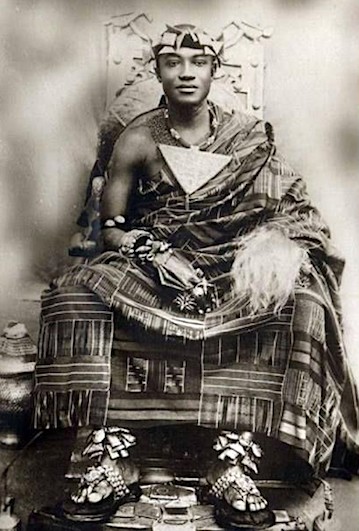 'Asantehene' Otumfuo Osei Agyeman Prempeh II
'Asantehene' Otumfuo Osei Agyeman Prempeh IIKente has remained the cloth of kings and paramount chiefs in the various traditional areas to this day. Even though you will find it worn in a more secular environment, the cloths that are available to the public and for purchase will never surpass those reserved for the highest echelons of Ghanain society.
The Asantehene (Ashanti Chief) adopted this fabric as a royal cloth and its prestige was encouraged and enhanced by using it only for special occasions.
Kente is also found in Asante shrines to the deities, or abosom, as a mark of their spiritual power.
The Ewe are another ethnic group who design, produce and wear kente strip-cloth sewn together into a robe-style garment worn draped across the shoulders and around the body like a Toga. The strips of the fabric should be straight as possible, both horizontally and vertically... and the bottom of the cloth should hang at the same length all the way around the wearer's ankles. Women wear kente in 3 pieces; skirt, blouse and an additional piece used as a shawl or draped over the arm.
This rare cloth below is a fine example of an unusual variant pattern where a tapestry weave technique is used to create pattern in the weft.
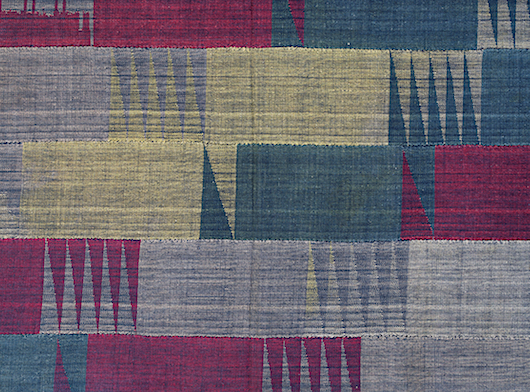 Kente tapestry cloth, Ewe
Kente tapestry cloth, EweThe quality of yarn differs according to the prestige and value associated with the cloth. Most commonly, Kente is woven with a mixture of cotton and rayon but for the most exceptional and prized pieces, it is made of silk yarn.
Historically it was woven with white cotton and indigo patterns and more latterly is similarly produced in black and white with minimally occurring dashes of color as you see below...
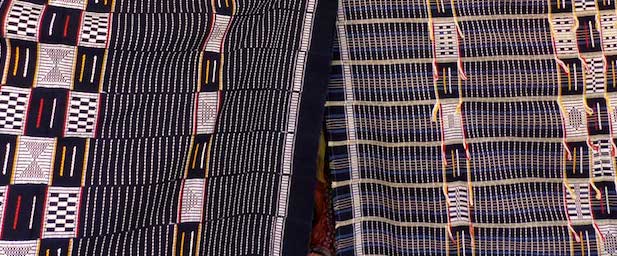 black and white kente with colorful threads
black and white kente with colorful threadsColour and pattern became all important and symbolism was attached to both colors, patterns and motifs. Names of the cloths can be derived from any source and may not bear any correlation to it's appearance. Together, the colors, patterns, shapes and names combine to tell a story, an anecdote, a theme or symbolize the wearer's clan, its history and its specific set of values.
When worn, it is more than just a piece of attire, it is visual representation of history, philosophy, ethics, religious belief, political thought and oral story-telling.
Kente cloth captured the attention of Afro-Americans in 1958 when this famous photo of President Eisenhower of the USA and newly independant Ghana's first president, Kwame Nkrumah visiting Washington was published in newspapers and magazines.
This photo was to have a profound effect on the status of Kente cloth, establishing it as a symbol of African heritage and pride and it almost became the uniform of Pan-Africanism rather than just being a significant West African textile. In 1962, to commemorate the occasion of this significant visit to the USA, Nkrumah commissioned master kente weaver A. E. Asare from Nsawam, Ghana to weave a special cloth and today this cloth hangs in the United Nations Hall in New York.
Asare's son, Ghanaian born, USA citizen Kwasi Asare produces kente cloth in the States and is very instrumental in promoting the beauty and cultural heritage of this West African textile.
Trace this story here
Production
Kente weaving equipment is hand made by specialized artisans who know their craft. It includes making a wooden loom, heddles, treadles, shuttles, bobbins, beaters and sword stick. Many bobbins are prepared and are held during warp-laying. Each component of the apparatus has accorded a name and all the equipment is shown great respect.
Kente production changed radically when silk fabric first arrived with the Portuguese. The silk cloth was pulled apart to use the silk thread until eventually whole silk skeins were imported and used for the production of royal, sacred cloth.
Strips are woven on a strap loom as seen above. The strips average about 4 inches in width each with their own pattern repetition and colors. They are then stitched together to make the very large cloths that make up the fabric piece.
The arrangement of pattern and color is key and needs to be predetermined and thought about whilst in construction. Often a pattern will change on its edges, where the pattern would be most prominent when worn. There are over 300 different Kente patterns in existence and every new one has to be offered to the kings before it can be released to anyone else.
The Kente weavers tend to be male and the women start the process by spinning raw cotton into the yarn to be used, dying the yarn, sewing strips together into cloths and assisting in placing and marketing the end result.
Two types of factory-produced kente cloths exist... those that produce woven kente on a larger loom and scale and then in the early 1960's, mill-woven, roller-printed cloth was produced in large meterage and in a variety of patterns.
Asante and Ewe weavers naturally objected to calling this fabric kente but since the handwoven version was heavy and cumbersome to wear or use, expensive and difficult to obtain it provided an alternative source of fabric for all the applications that kente had begun to be used for. Both hand and factory produced kente have entered the contemporary fashion and interior design worlds.
Symbolism in color and pattern
Kente cloth is identified by its dazzling array of multicolored patterns and designs of mostly a geometric nature. The act of weaving weft designs into every available block of color is called adweneasa.
Symbolic meanings of the colors of African kente cloth:
- Black - the most significant color in kente cloth representing intensified spiritual energy and strength, maturation
- Blue - peacefulness, harmony and love
- Green - harvesting, spiritual renewal, planting, growth
- Gold - royalty, wealth, glory, spiritual purity
- Silver - serenity, purity, joy, associated with the moon
- White - purification, sanctification rites, festive occasions
- Yellow - preciousness, royal, wealth and fertility
- Grey - healing and cleansing, associated with ash
- Red - political, spiritual, bloodshed, rites and death
- Maroon - mother earth, healing
- Pink - female essence of life
- Purple - feminine aspects of life, usually worn by women
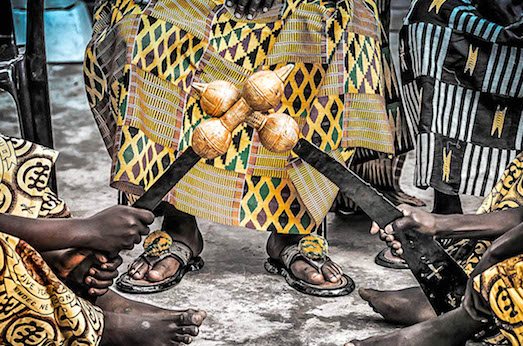 Paramount chiefs showing both kente and adinkra
Paramount chiefs showing both kente and adinkraAdinkra cloth is another West African cloth that is characterized by its stamped pattern design. These days Adinkra and Kente are often combined into highly decorative but symbolic textiles, the combination of colors and motifs giving the cloth another layer of depth of meaning and tradition. The textile is a way of sending specific messages to the public.
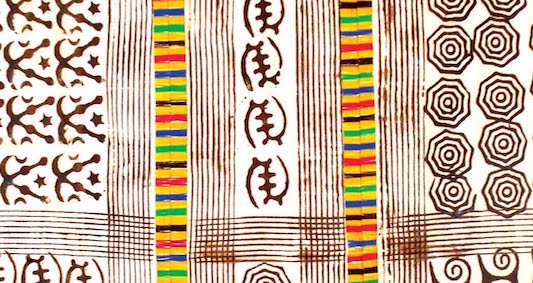 Adinkra cloth with whip-stitched, strip embroidery
Adinkra cloth with whip-stitched, strip embroidery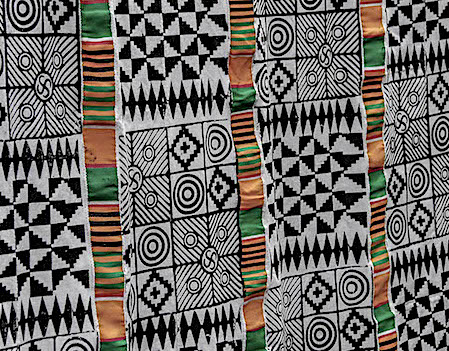 Adinkra with Kente strips sewn creating stripes
Adinkra with Kente strips sewn creating stripesAdinkra cloths are used mainly for funerals and Kente for celebratory occasions.
Modern Use of Kente Cloth
Highlighting the connection between America and the African continent, kente cloth is one of the most striking icons to emerge from the growing Afrocentric movement.
Clothing and adornment
It is often used for bridal outfits in mix and match schemes, the couple seen below are a good example of how to wear a striking and elegant wedding outfit featuring kente cloth.
On an egalitarian stage, stoles are worn at graduation ceremonies, church gatherings (by congregation and ministers alike) and even at political rallies. Some of these scarves are printed or woven with logos or significant colors and patterns, while others are made from traditional African kente cloth.
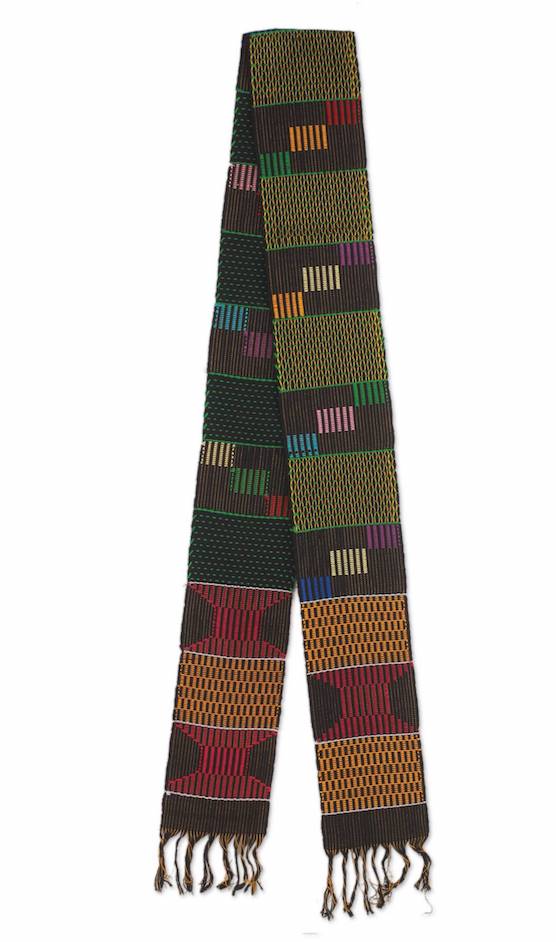
Shawls or wraps are a favorite way for the female sex to dress up with kente cloth. Here are two very different versions, one very graphic and contemporary and the other following more traditional lines but but with bright, fashionable colors.
Contemporary use of kente in the form of garments, scarves, bags, hats, footwear and men's neck and bowties has become commonplace. Kente covered jewelry includes bracelets, earring and necklaces. Hair ornaments, purses, handbags, satchels and sandals are further fashion accessories that are produced from mostly mill-woven fabric.
These items are found in most Ghanaian markets and are popular tourist choices.
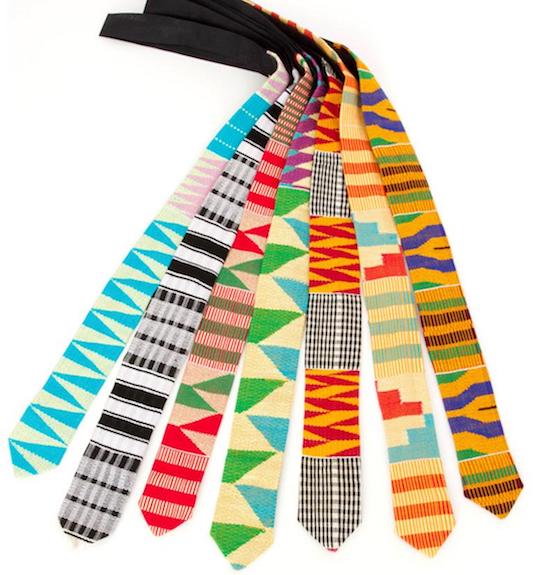 kente necktie swahili modern
kente necktie swahili modern
Kente cloth in decor
When used in decor and furnishings, sometimes kente cloth is woven using traditional methods and other times it is cleverly designed and printed to look like the real thing such as these mill-woven gold/yellow and indigo/red colourways of kente cloth seen below.
Contemporary colors and hues that reflect popular taste and color trends are incorporated in either weave or print and may not reflect any traditional color symbolism at all. Either way, kente cloth makes fabulous cushions; sturdy, dramatic and colorful they enhance any room.
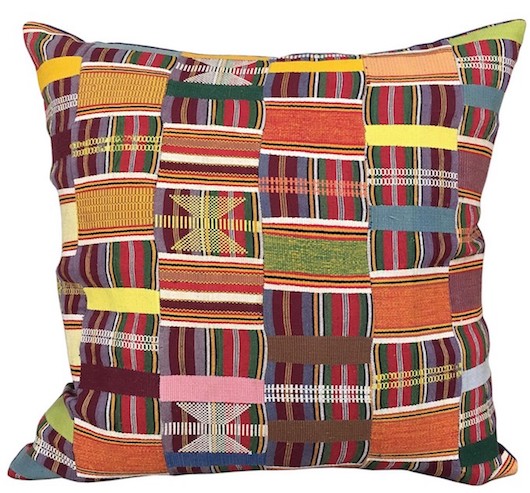
Most styles of furniture are suitable for upholstery in kente cloth... here, below, modernist furniture from a factory in Kenya successfully shows off a very contemporary adaption of a kente pattern.
Antique heritage cloths can make for an uplifting addition in a room, giving it a touch of authenticity and a delightful focus of attention.
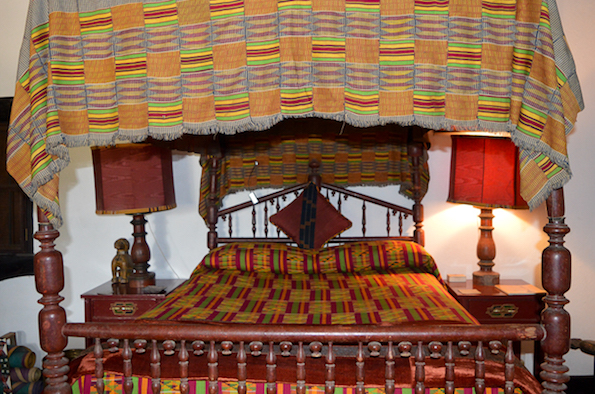 Heritage House, Kenya-bedroom adorned w kente
Heritage House, Kenya-bedroom adorned w kenteContemporary Kente
Architecture
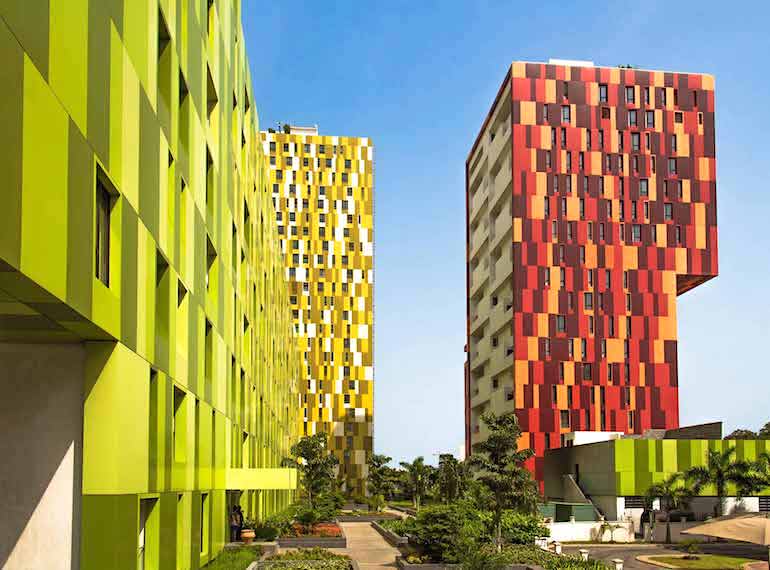 Villaggio Vista, Accra, Ghana
Villaggio Vista, Accra, GhanaThis awesome group of buildings found in Accra, Ghana is a block of apartments designed by AKII and includes the tallest building in West Africa. A series of units, primarily residential, it takes its color and design from the county's most recognized design product.. kente cloth.
Contemporary Kente art
It is in the diversity and visual intensity of African fabrics that contemporary African artists find inspiration. A material culture exists in most major cities of West Africa and it is in the diversity and visual intensity of African fabrics that contemporary African artists find inspiration.
El Anatsui
El Anatsui was born in 1944 in Ghana, belonging to the Ewe tribe. His father and brother were kente weavers and indeed, Anatsui's metal sculptures resemble huge panels of kente cloth, hanging like vast shimmering tapestries with folds and creases.
His luminous sculptures allude not only to indigenous textiles but also to the history and heritage of Africa and also the over-commercialization.
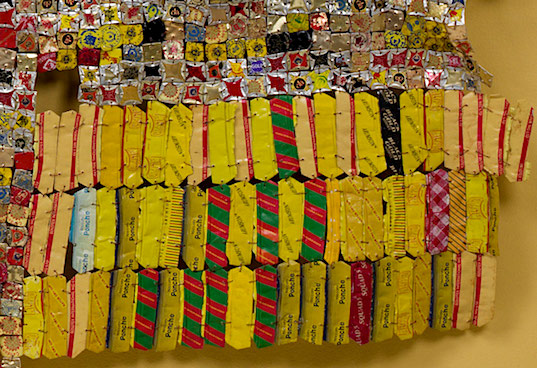 Detail, tapestry cloth, El Anatsui
Detail, tapestry cloth, El AnatsuiThe colors of kente cloth are the same as the bottle tops he uses to build up his monumental structures. Arranged with shifting grid of stripes and blocks of color and shapes, they form their own organic kente cloth made from metal and tin and shining gold and silver.
Anatsui uses over a dozen assistants to help him flatter the bottle caps into strips. He then arranges the tops into a configuration he likes and the pieces are stitch together with copper wire.
Serge Attukwei Clottey
Serge Attukwe Clottey was born in 1985 in Accra, Ghana where he still resides.
Working across installation, photography and sculpture he explores intimately personal and political subject matter. His narratives are often rooted in histories of trade and migration.
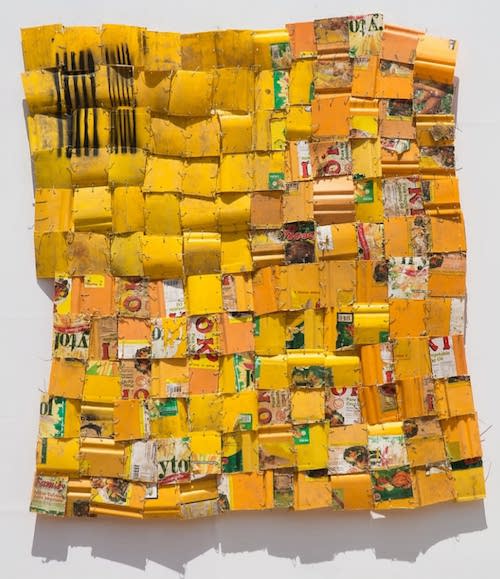 Serge Clottey, 'Daily Dispatched' 7
Serge Clottey, 'Daily Dispatched' 7Some of his influences can be directly seen in his work like kente cloth, Chinese symbols (representing new Chinese colonisation of Africa) and bar codes (radical over-commercialism).
Through his use of discarded materials by re-assembling, he manages to shape and reshape contemporary notions around colonial histories, economic entanglements and gender structures, remaking the world.
He has termed his work afrogallonism in reference to over-commercialization in his home country; these yellow plastic containers are used in many ways to make his point.
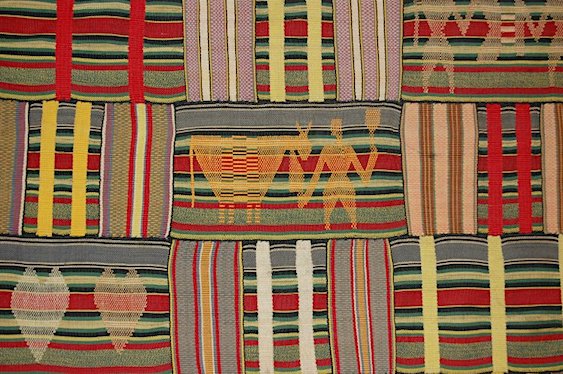
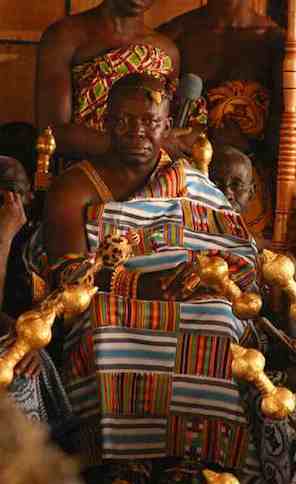
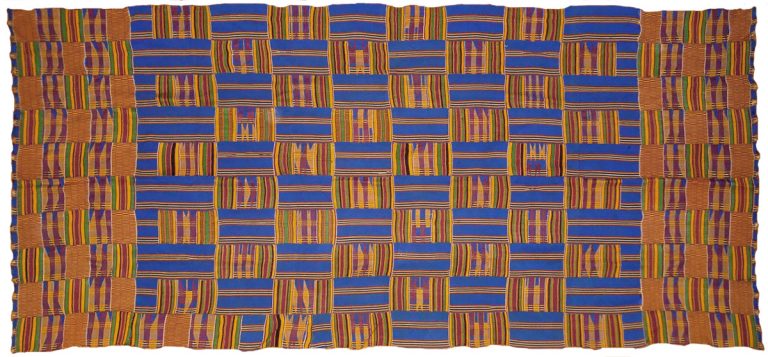
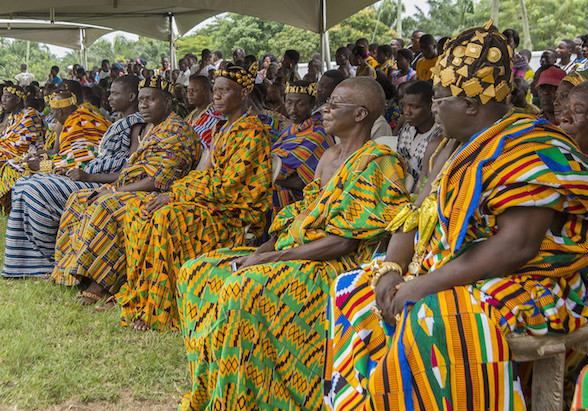
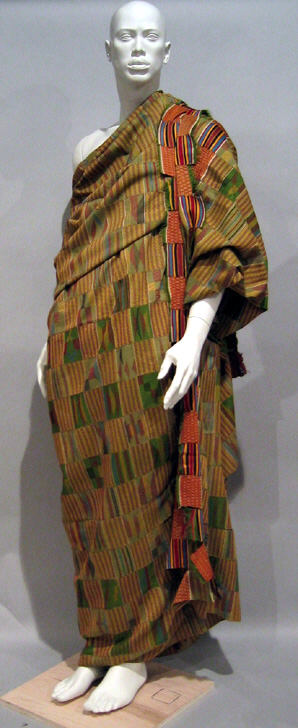
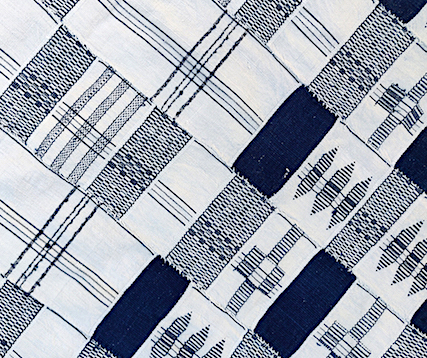
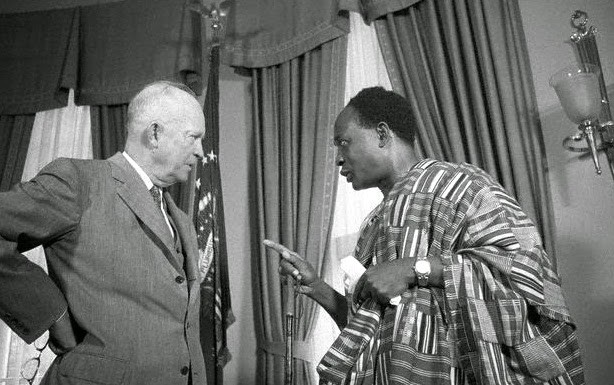
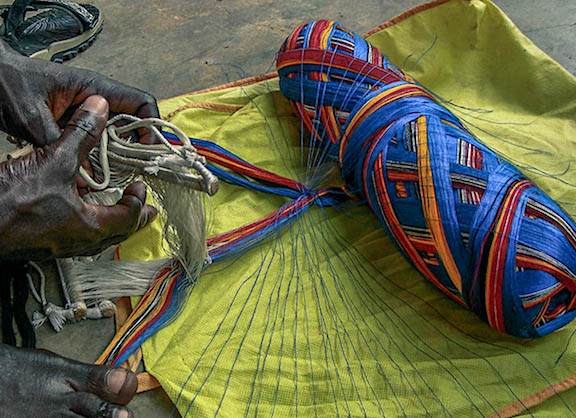
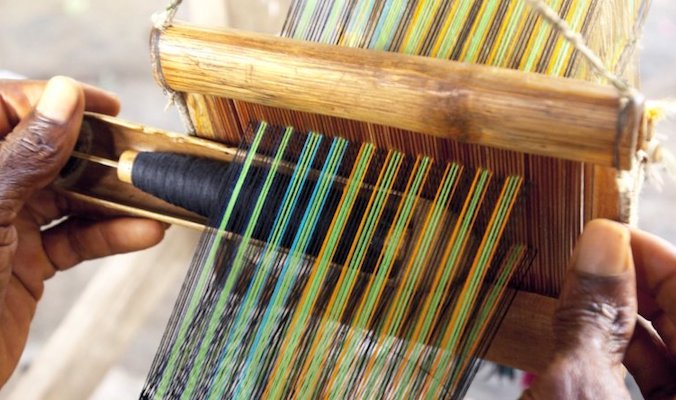
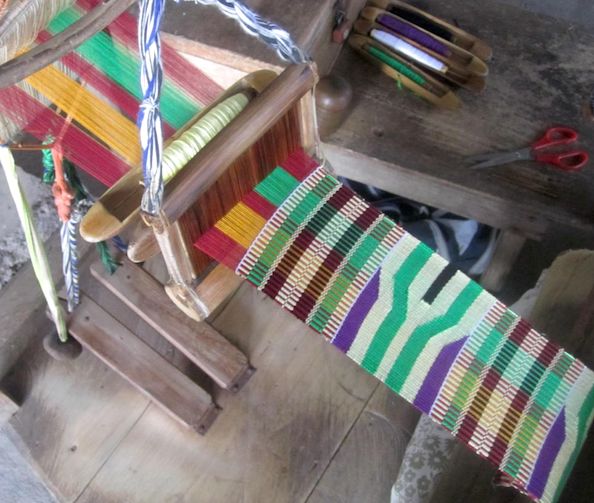
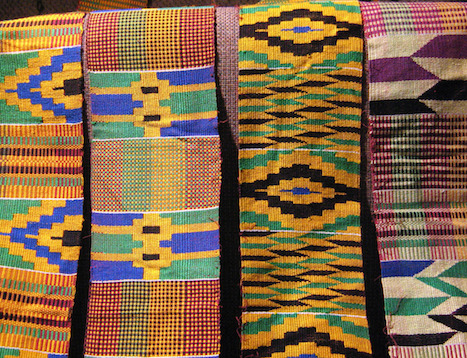
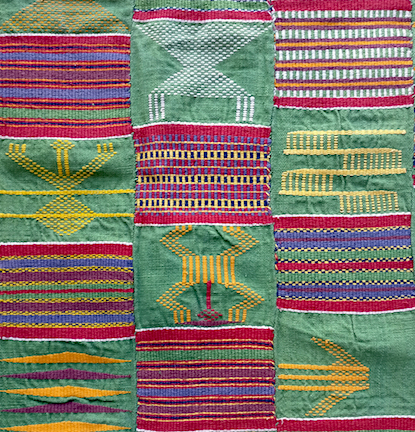
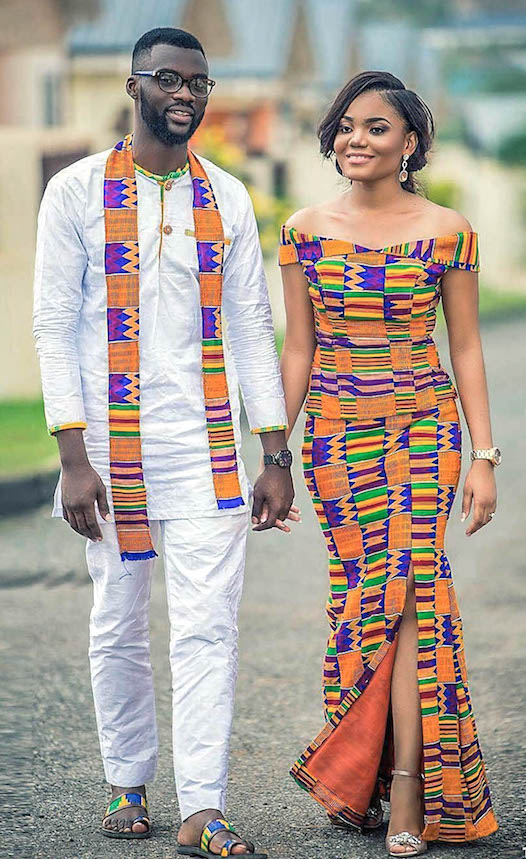
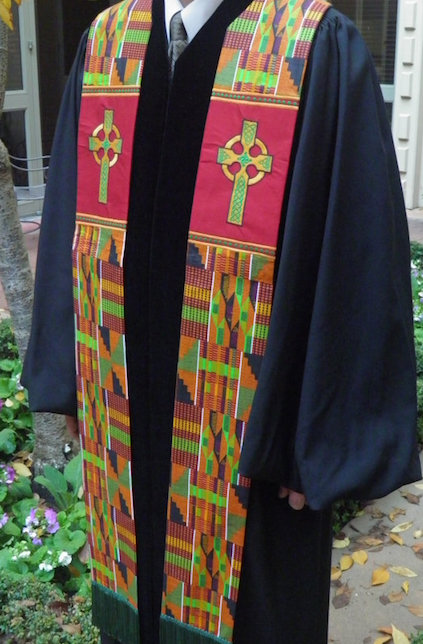
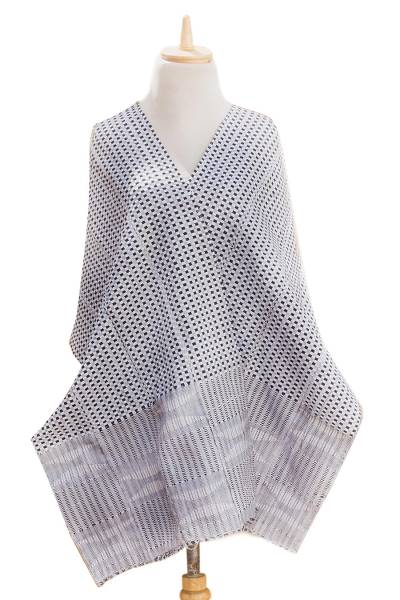
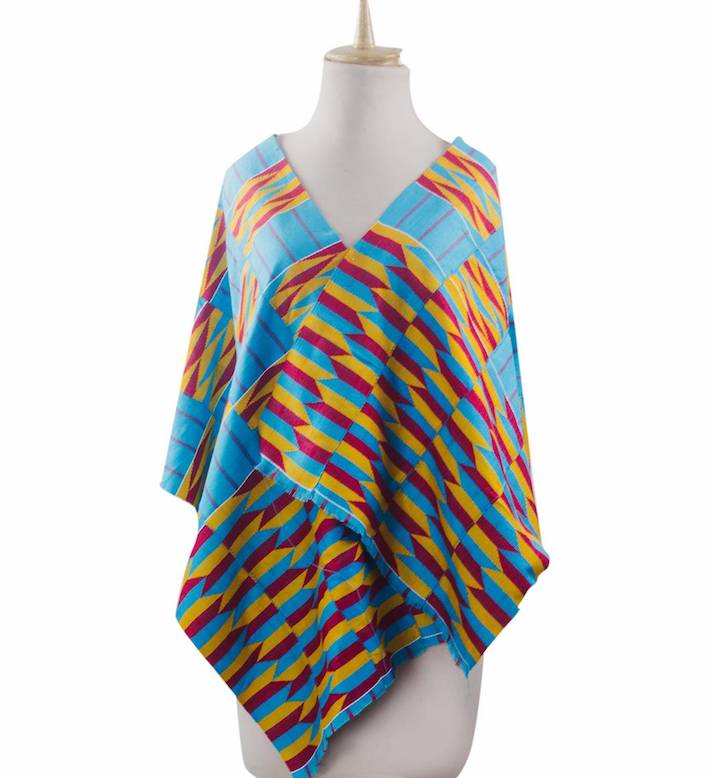
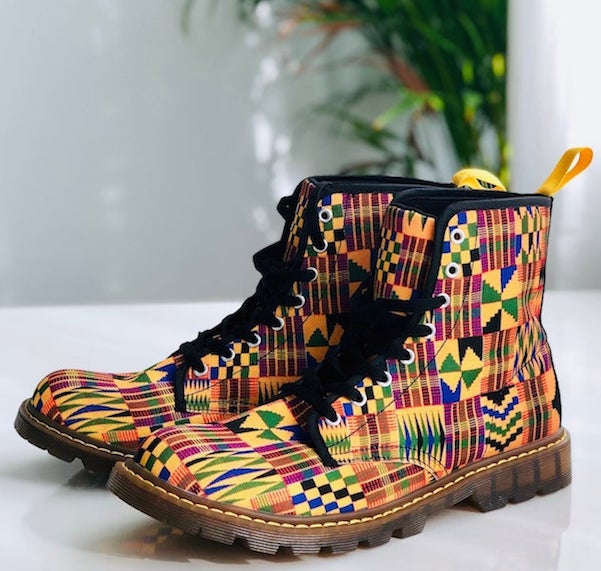
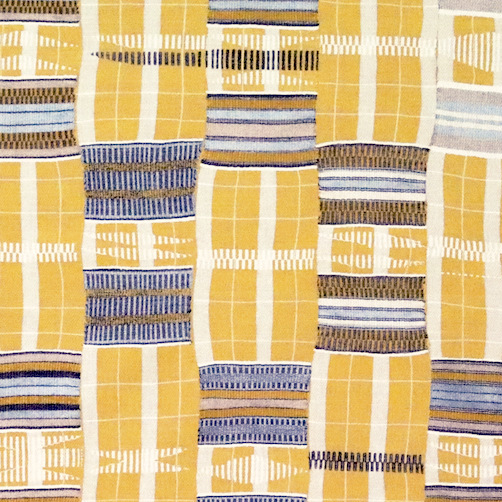
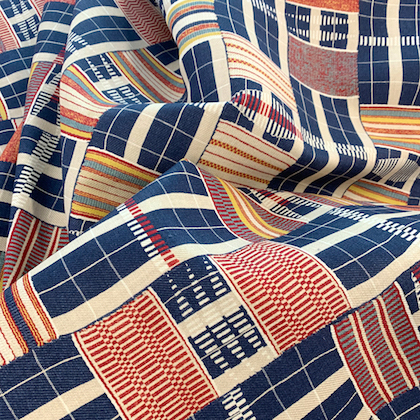
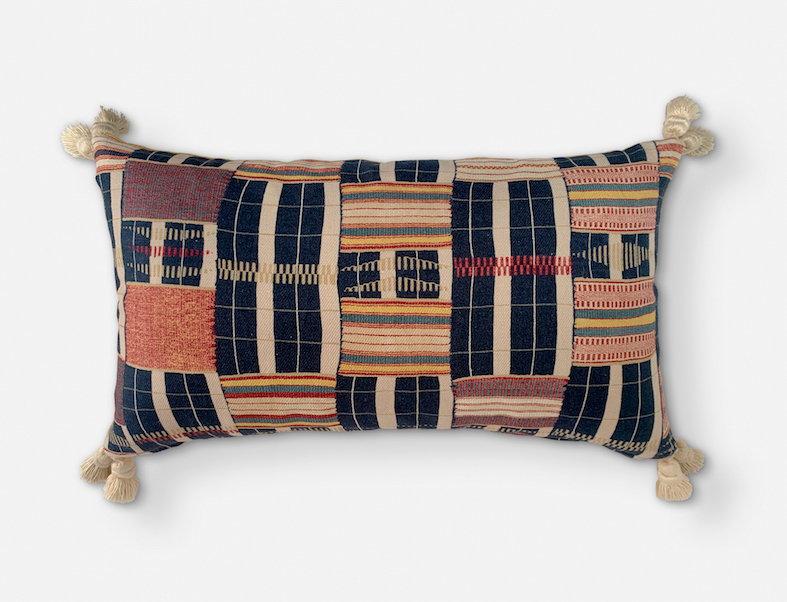
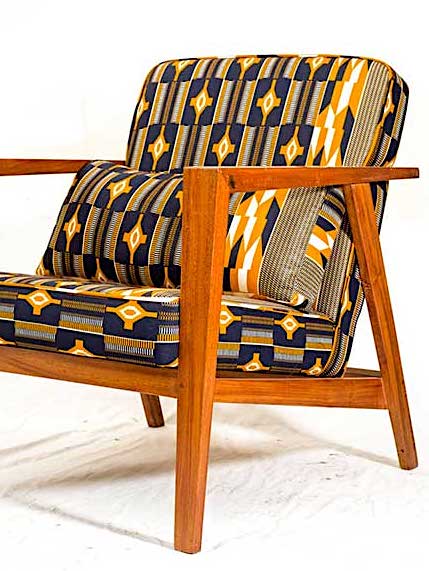
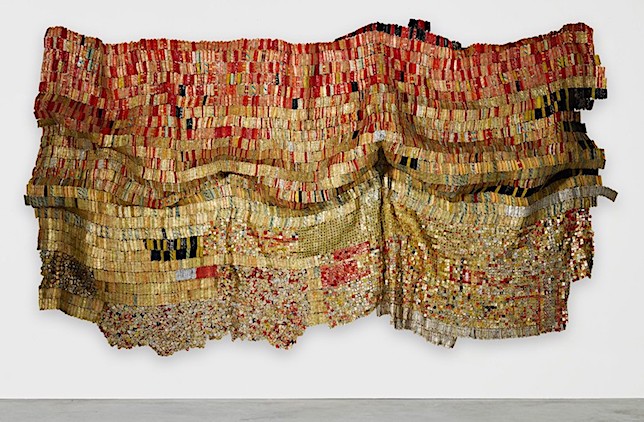
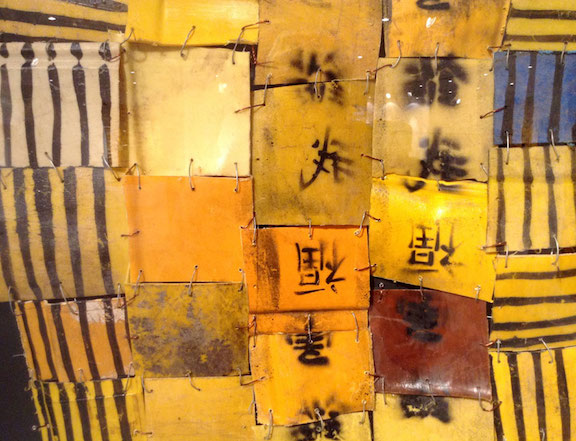
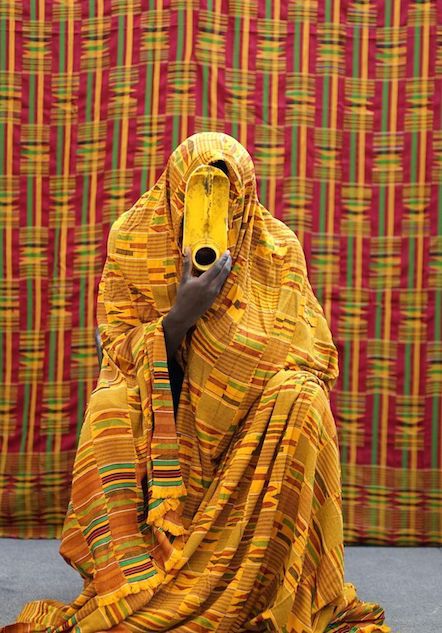
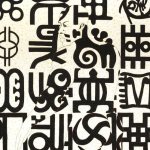
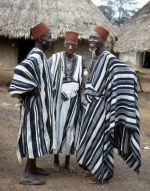
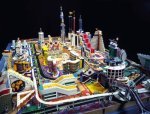
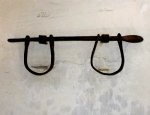
New! Comments
Have your say about what you just read! Leave me a comment in the box below.